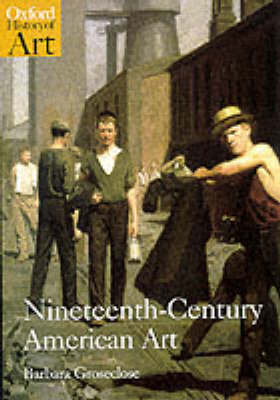Oxford History of Art
1 total work
Painting and sculpture flourished in nineteenth-century America and saw the rise of self-taught travelling artists and professional artists producing works for a growing number of wealthy patrons. This innovative introduction examines the profession of the artist alongside the reception of their work by nineteenth-century art audiences. Works of art by familiar names such as Thomas Eakins and Winslow Homer are discussed in detail within the larger arena of visual culture, as are key works by recently discovered artists such as Harriet Hosmer. The thematic approach focuses on portraiture, landscape painting, the American West, commemorative art, and goes on to examine the ways in which painters responded to major social and economic changes resulting from the rapid change from an agriculturally-based former colony to an industrialized imperial power with an evolving democracy. Uniquely, Barbara Groseclose treats the embeddedness of American Art in its European heritage as continual and salutary, rather than intermittent and oppositional, and also explores the changing interpretations of art of this period.
